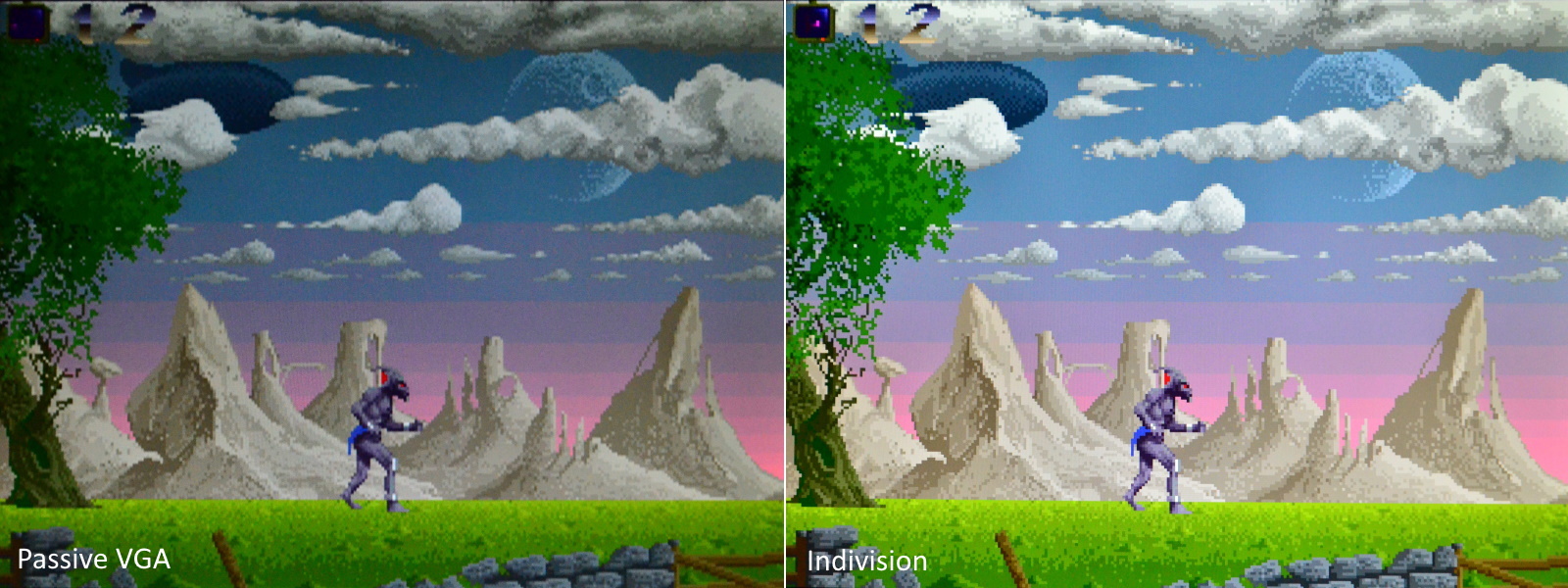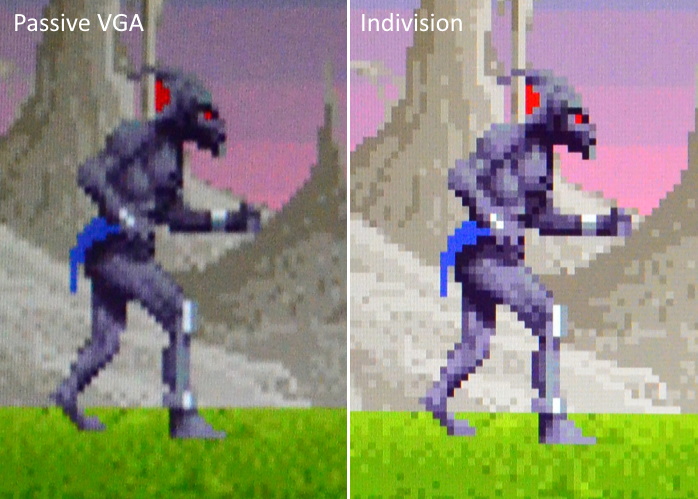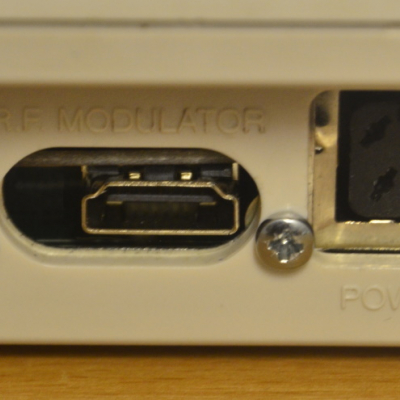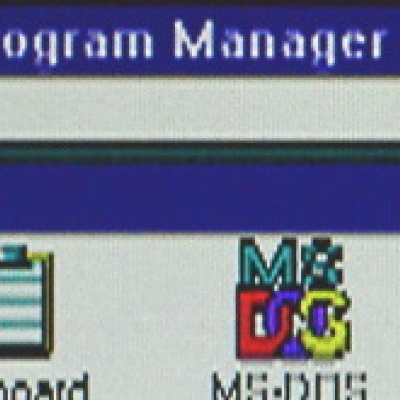Back in the day I used my Amiga with my Commodore 1084S monitor. I originally bought the 1084S for my Amiga 500 and when that got replaced with the Amiga 1200 the monitor stayed on the desk with the 1200 while the 500 went back in its box to hibernate on top of the wardrobe.
Now, quite a few years as well as house moves later, I only have space for one flat panel monitor on my desk. Luckily I found that the Acer S221HQL LCD monitor that I bought to use with my PC actually accepts standard PAL and NTSC signals over its VGA port. This allowed me to connect my 1200 with the modern monitor using just a passive Amiga-to-VGA converter that plugs directly into the Amiga's display port. The image is a bit dull, not too sharp and stretched out, but good enough to play the occasional game and watch some demos. For programming I tend to use the "Productivity" mode, which produces a 640x480 screen with a VGA compatible signal. The Acer showed that with black bars on either side to give it the correct aspect ratio and this would be my standard Workbench resolution for programming and text editing for a couple of years.
Working on the Amiga this way was fine, but switching back and forward between PC and Amiga always left me a bit annoyed at the dull colours of the Amiga. Elsewhere in my study the 500 was hooked up to the 1084S again, so I knew that the colours should be more brilliant.I started looking at other ways of connecting the Amiga to the monitor but discarded a number of external solutions as I did not want more stuff to clutter up the area around my desk. In the end I decided that I wanted a flicker fixer made by Individual Computers, which lives inside the 1200 and would also allow me to use higher resolution screens. Higher resolution screens for me means being able to see more lines of either code or text. Unfortunately the Indivision mk2 had sold out a while back, but some moderators on their forum spoke of a new version being under development.
When Individual Computers announced the release date of their brand new Indivision AGA MK3, I placed a pre-order. After waiting a few weeks I was pleasantly surprised to receive my Indivision a couple of days earlier than promised. As explained on their website the Indivision AGA mk3 sits on top of the Lisa chip, which is responsible for the Amiga's video output. The Indivision also gets some signals from one of the CIAs, which allows it to monitor the keyboard and the mouse, allowing the user to change display settings on the fly.
The new MK3 can be used on either the VGA input or the HDMI input of the monitor. Since my monitor has a spare HDMI input I decided to go for that, allowing me to leave the passive VGA converter in place for the moment. Having both display options available on the same monitor allows for easy comparison between the two, and when comparing the two video signals the difference is absolutely remarkable. The output of the Indivision is so sharp and crisp that it looks like WinUAE on a PC.
The photo below shows the difference when viewing the contents of the SYS: folder:

The image on the left hand side uses the 640x480 "productivity" mode over the passive VGA converter. The bits that look like flecks of dust in the photograph are actually artefacts caused by noise in the signal. These artefacts come and go so quickly that you don't really see them as clearly on the monitor as you can see them in the photograph. There is a lot of ghosting visible, there are faint banner-like movements in the background that are not that obvious in this photo.
The image on the right hand side is from the monitor's HDMI input that is getting the signal from the Indivision AGA MK3. Blacks are proper black, whites are proper white. No ghosting and no banners. Crisp and beautiful, regardless of the resolution of the Amiga screen.
Another point of comparison is the way the Indivision handles games and demos. As an example I have made screenshots of Shadow of the beast on the passive VGA convertor as well as using the Indivision. Both shots were taken from the same monitor using the same camera settings for each of the shots.

The first thing that is clear (excuse the pun) is that the passive VGA picture is considerably darker compared to the picture made by the Indivision. Just like the screenshot of the SYS: folder earlier in this post there is a lot of noise in the passive VGA picture, of which none is visible in the Indivision version of the picture.
This noise is more obvious in the following detail images cropped from the pictures above:

These detail images do actually show quite accurately how I see the image on the monitor. After using the passive VGA for a good few years it is really nice to now be able to see the crisp colours of the Amiga again.
I'm a very casual gamer and can't say that I have noticed any latency while playing a few of my old time favourites. Your "mileage may vary" as they say, but as I've heard no complaints about the latency on any of the forums I visit I don't think it an issue with this flicker fixer.
Really happy that I bought it, can only recommend it!
Please also check out part 2, where I show how I installed the system with the HDMI connector sticking out of the RF modulator hole in the Amiga 1200 case.
 tech.jpg)


